Asteroseismic Signatures of Planetary Engulfment
NHFP Symposium | Slides at http://hyad.es/talks
Joel Ong, Marc Hon, Melinda Soares-Furtado, et al.
September 19, 2023
Introduction:
Solar-like
Oscillations


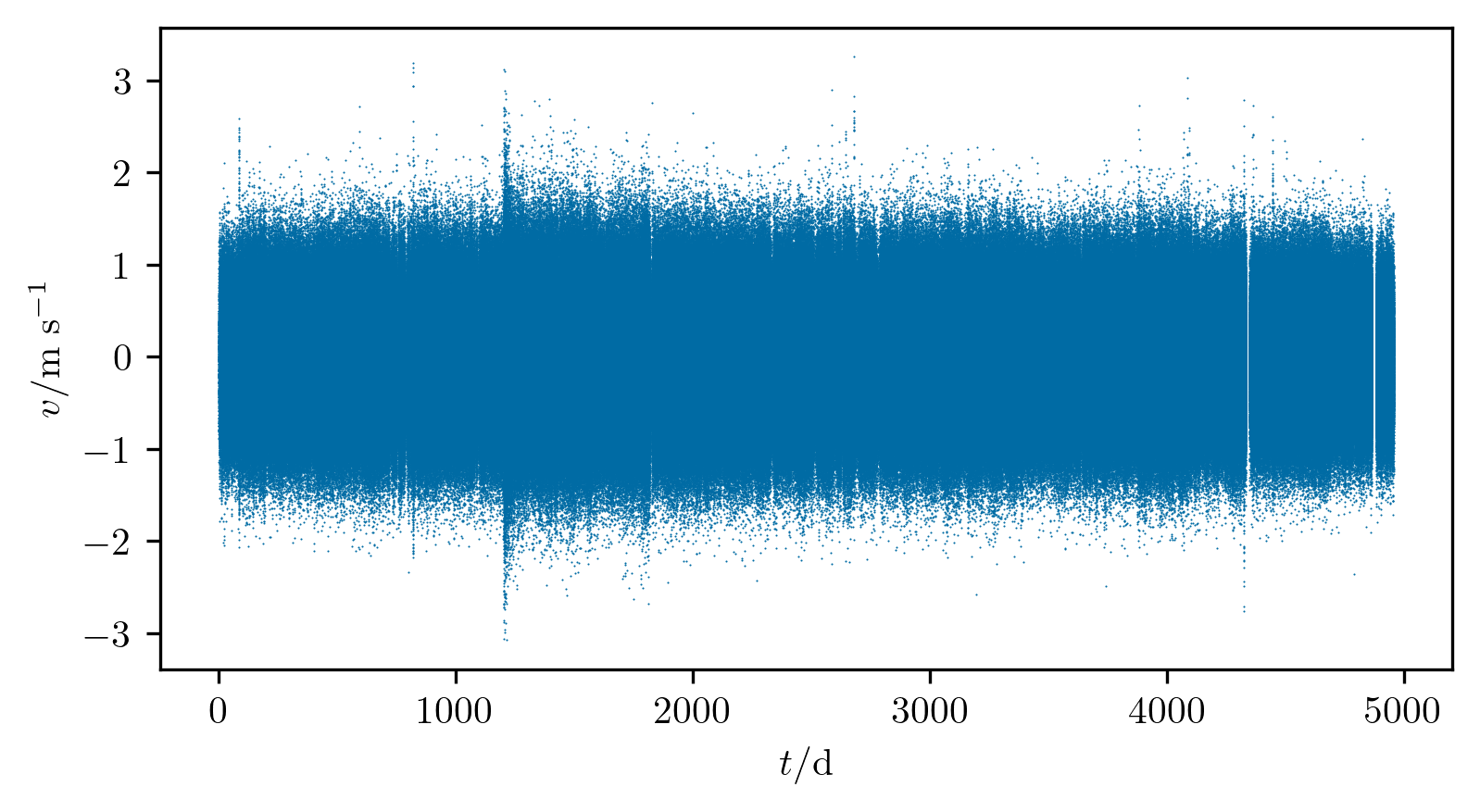
\(\ell = 0\) MDI Doppler velocities
Power spectra of MDI dopplergrams
\[ \begin{aligned} {\Delta\nu_\odot} &\sim 135\ \mathrm{\mu Hz} \\ {\nu_{\text{max},\odot}} &\sim 3090\ \mathrm{\mu Hz} \end{aligned} \]
(roughly 5-minute oscillations)
p-mode frequencies satisfy \(\nu_{n\ell} \sim \Delta\nu\left(n + {\ell \over 2} + \epsilon_\ell(\nu)\right) + \mathcal{O}(1/\nu)\)
Stochastic,
broad-band
excitation
\(\implies\) equipartition
between different \(m\)
Key Application: Global Parameter Estimation
Hare “Zebedee”, Cunha+ (incl. Ong, 2021)
Precise measurements of field stars: \[ {\sigma_R \over R} \lesssim 2 \%; {\sigma_M \over M} \lesssim 5 \% \]
A Rapidly Rotating Red Giant
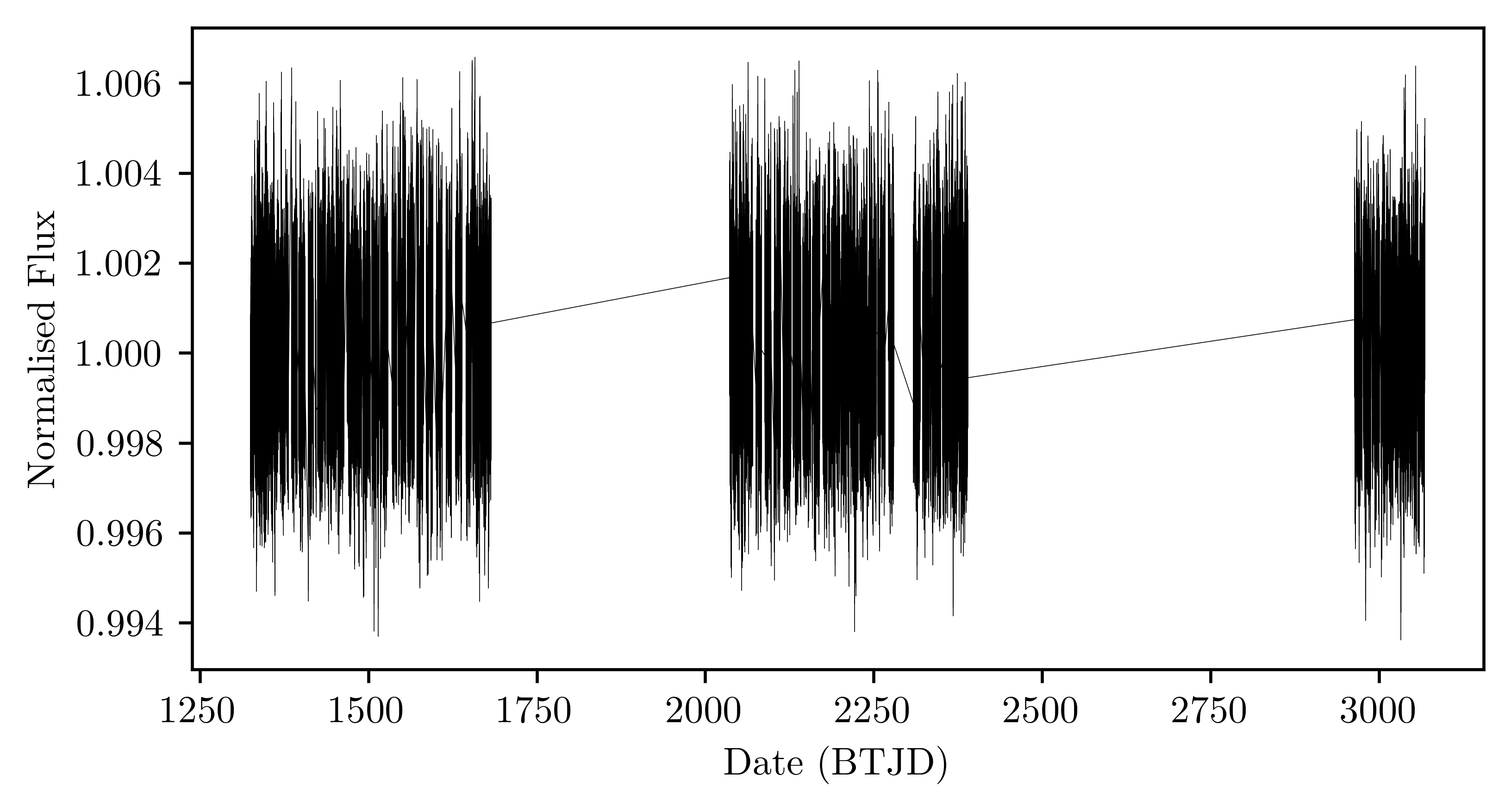
Very high \(\mathrm{A(Li)}\),
but otherwise innocuous
Mode Identification
\[\ell = 0,2?\]
But Kepler says \(\ell =
0\) have to live here!
(and theory says so too…)
Asteroseismology Happens…


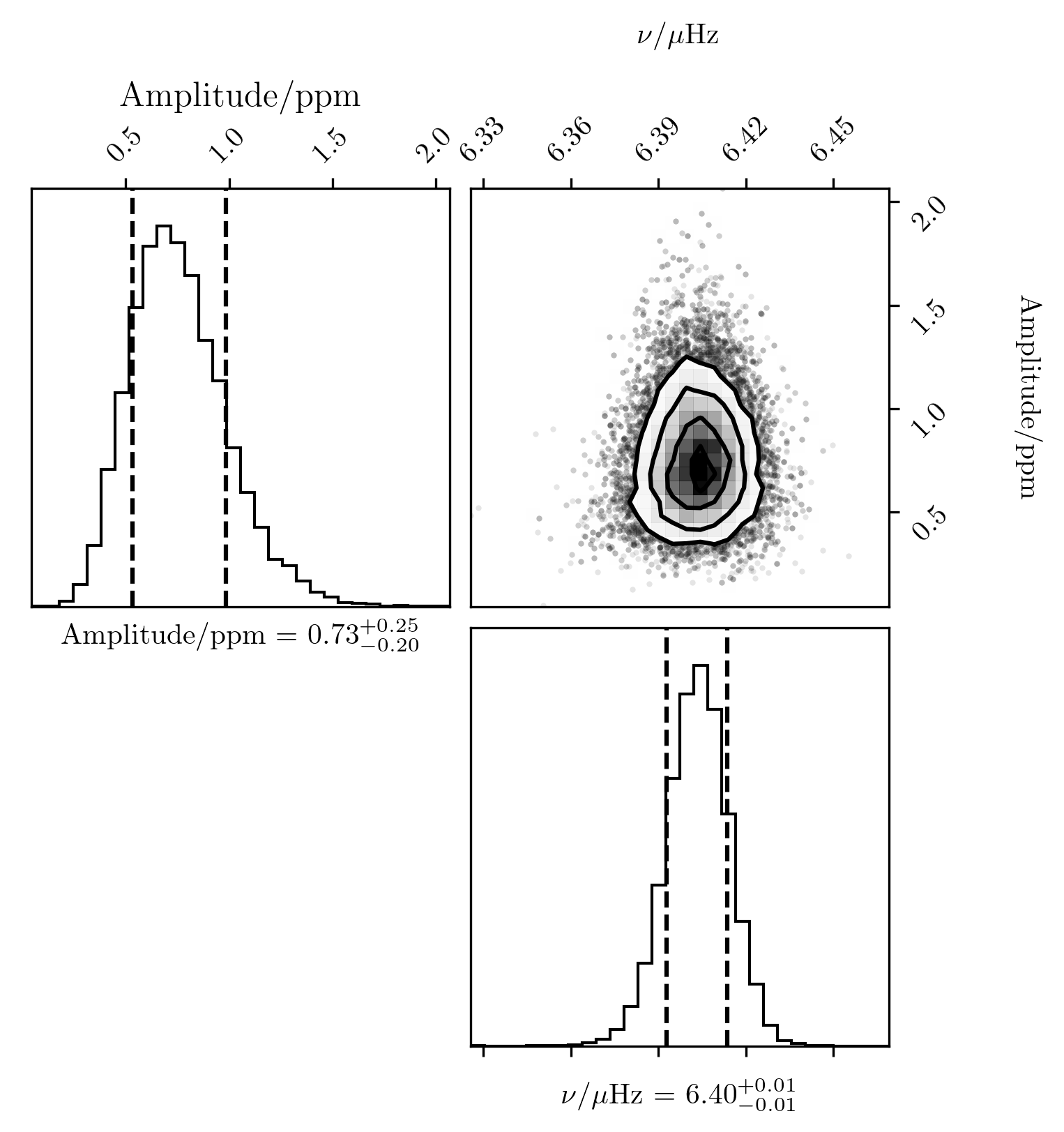
Rotational splittings from seismology:
- \(\ell = 1\): \(\delta\nu_{\text{rot},1} \sim 0.09\ \mu\mathrm{Hz}\)
- \(\ell = 2\): \(\delta\nu_{\text{rot},2} \sim 0.10\ \mu\mathrm{Hz}\)
\(\implies P_\text{rot} \sim 115\ \mathrm{d}?\)

Rotational signal probably got
detrended away
by systematic corrections…
TESS w/ Pixel-Level Decorrelation + Stitching
Very suggestive…
but is this real?
Probably yes!
Observational Overview
Asteroseismology:
- \(M \sim 1.14 \pm 0.04\ M_\odot\)
- \(R \sim 23.5 \pm 0.03\ R_\odot\)
- \(P_\text{rot,bulk} \sim 115 \pm 10\ \mathrm{d}\)
- (Weak evidence for rotational shear)
Photometry:
- \(P_\text{rot,surf} \sim 99 \pm 3\ \mathrm{d}\)
Spectroscopy:
- \(V\sin i \implies \sim 110 \pm 8\ \mathrm{d}\)
- \(\mathrm{A(Li)} = 3.16 \pm 0.08\ \mathrm{dex}\)
- \(^{14}\mathrm{N}\)-deficient relative to APOGEE sample
Gaia DR3:
- RUWE of 1.06
- \(\sigma_V = 0.16\
\mathrm{km/s}\)
over 2.2 years
How did this happen??
Gaia RV scatter rules out
large RV semiamplitudes…
\(P_\text{orb} \gg 99\ \mathrm{d}\)
cannot spin star
up to 99-day rotational period…
Remaining permissible orbits are
unstable to tidal dissipation!
\(\implies\) ENGULFMENT?
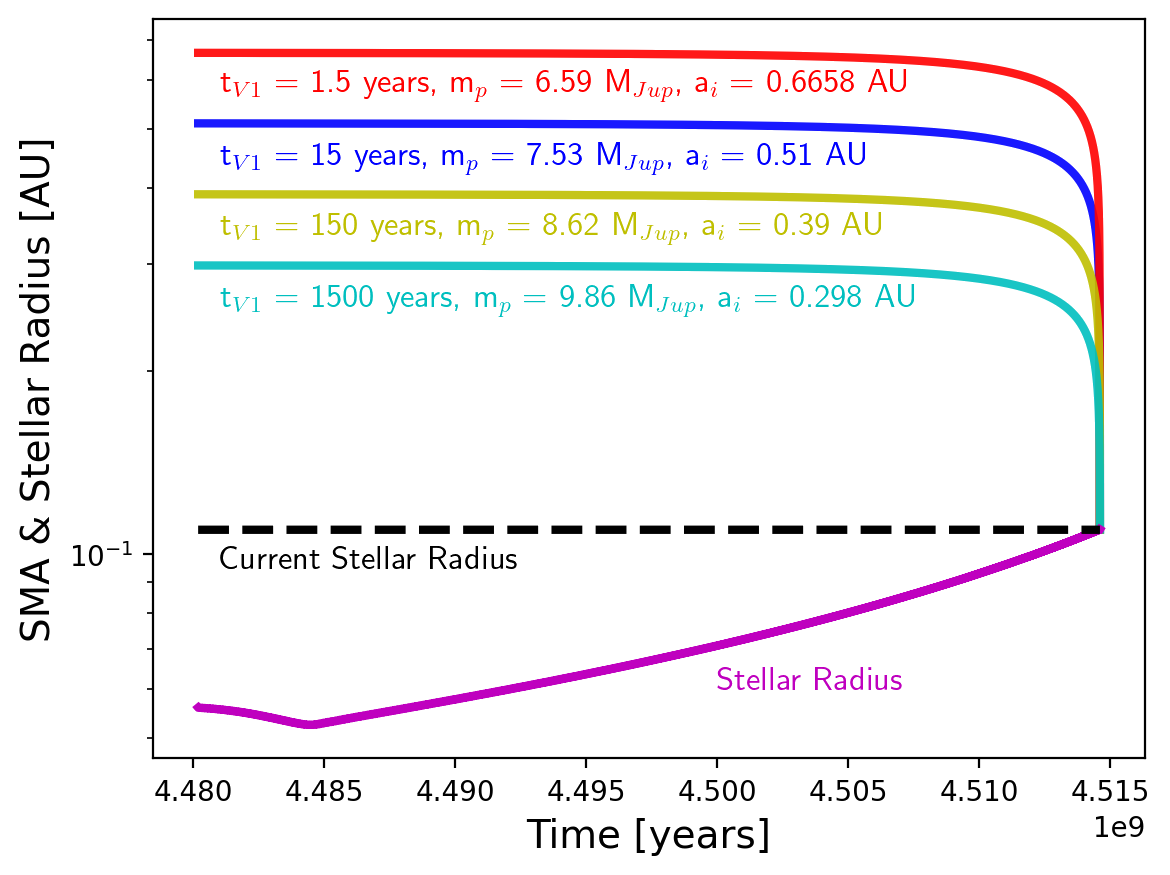
Conclusion
A Rapidly-Rotating Red Giant
TESS finds a lithium-rich, rapidly rotating,
and likely standalone red giant, with rotation
confirmed independently using ASAS-SN, seismology,
\(V \sin i\).
Other constraints from spectroscopy and Gaia
strongly suggest an engulfment scenario.
If engulfment, \(< 5\ \mathrm{Mya}\), with mass about \(6\)-\(10\ M_J\).
\[\mathrm{j}\mathrm{o}\mathrm{e}\mathrm{l}\mathrm{o}\mathrm{n}\mathrm{g}\ \text{@}\ \text{hawaii}.\text{edu}\]
Extras
Magnetorotational Braking
Could it be a T Tauri Star?
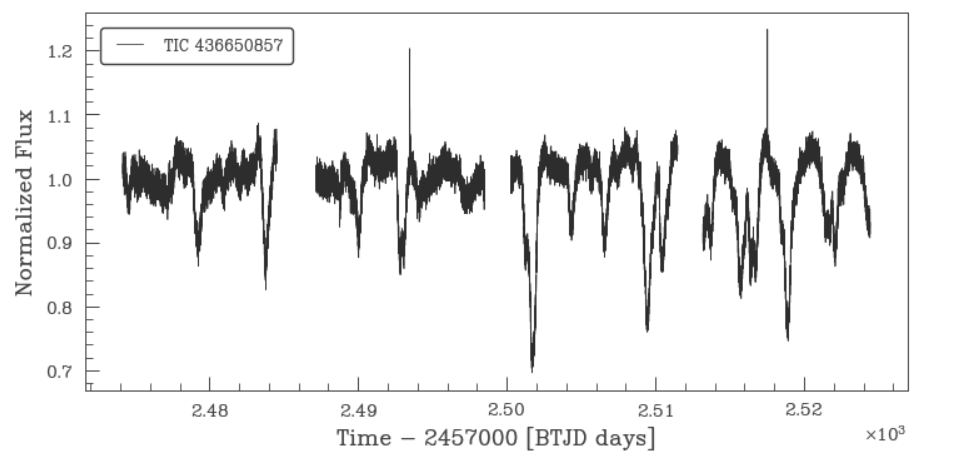
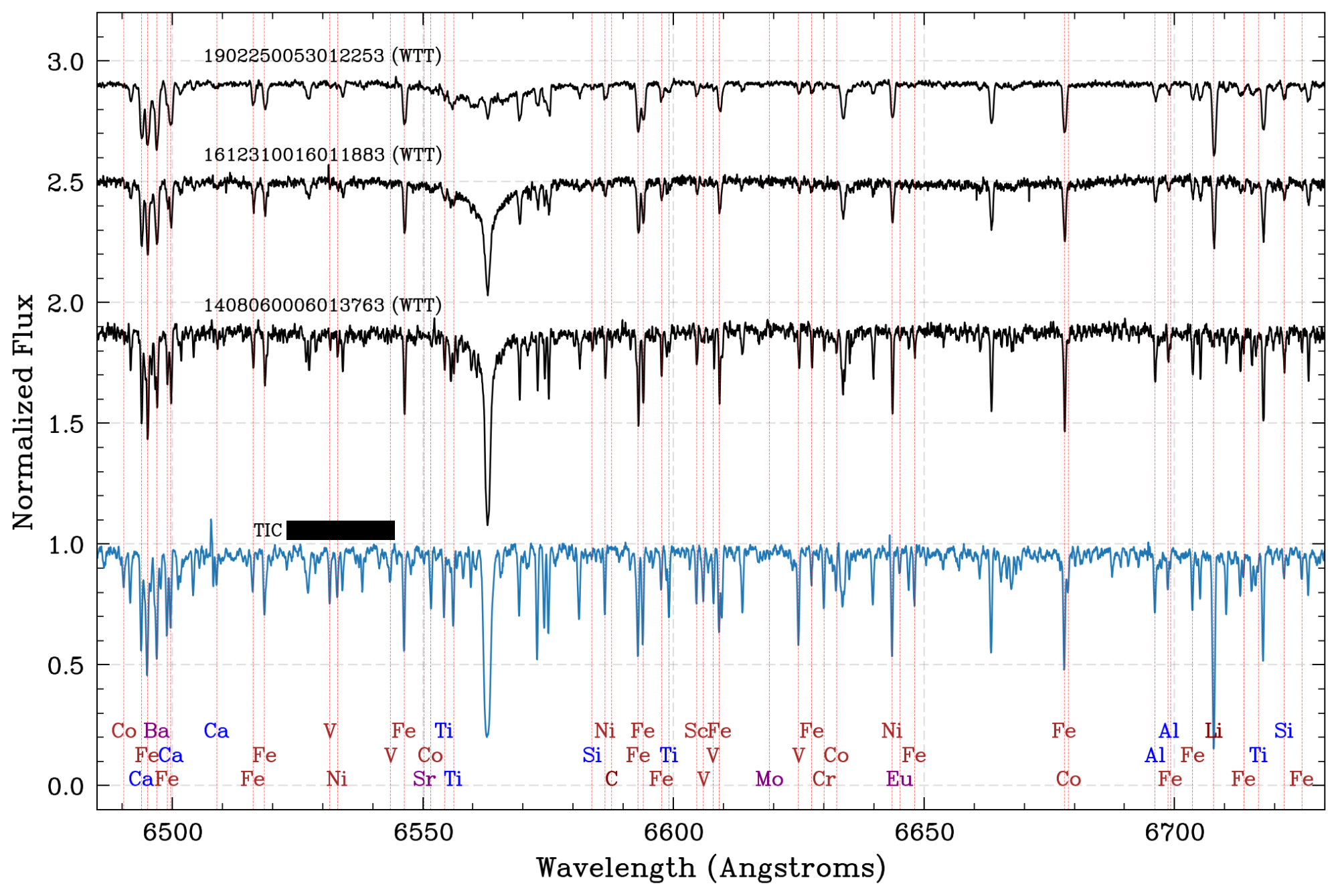

V501 Aur: a red giant accidentally misclassified as
a WTT!
(Vaňko et al. 2017: spectroscopic binary with \(K = 27\ \mathrm{km/s}, P \sim 69\
\mathrm{d}\))